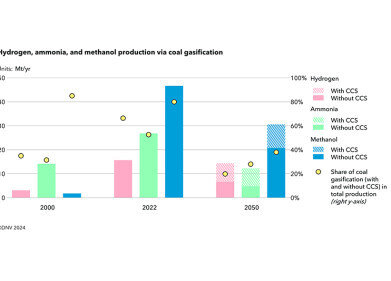Green Energy
What is Green Gas?
May 17 2015
When we hear the words ‘methane’ or ‘natural gas’, we instantly think of a dirty source of energy that releases harmful emissions into our atmosphere by burning fossil fuels. But what if there was a way to produce clean, renewable gas from organic material which didn’t contribute any extra harmful pollutants to the environment?
Step forward green gas, otherwise known as biogas. This is produced by processing corn, rapeseed, waste food and even organic waste matter to produce biomethane, which can be pumped directly into the National Grid or to houses in the form of electricity.
Biogas on the Continent
The idea of green gas is still relatively new, being around 10 years old. Back in 2008, biogas was seen as an exciting new method of energy production, which although could not rival the output of fossil fuels or nuclear means, was developing and becoming more efficient all of the time.
Germany, ever the leader in efficiency, was the first European country to pioneer the scheme, building 820 biogas plants in 2006. This made them the leading producer and technological experts in the field, worldwide. The Netherlands and Austria have followed suit in recent years, and now it seems like the UK is waking up to biogas potential, too.
Biogas in the UK
According to Ciaran Burns of the Renewable Energy Association (REA), the UK is the fastest growing market for biogas right now. In 2013, there were a mere three plants dedicated to the harvesting of biomethane; by the following year, that number had gone up nine times to 28. By the close of this year, experts expect more than 50 operation centres to be in place.
Last year, the Labour Party pledged their commitment to green gas as a viable source of alternative energy. Though such an endorsement was welcomed warmly by biomethane industry officials and businessmen, their limited influence in light of the recent election results may not be able to give biogas as much of a shot in the arm as they could have from Westminster.
The most successful biogas plants operate by combining agriculture with biofuel production. Waste food and scraps is delivered from restaurants, pubs and other businesses from the nearby area and processed into usable energy that works towards powering the plant itself (thus making it self-sustaining), supplying local homes with power and then selling any surplus back to the grid.
Problems in Practice
However, not all businesses have established such an equilibrium. Especially on the continent, many biogas farms are not harvesting agricultural crops and biofuels in harmony, but rather replacing one with the other. This has led to the displacement of food lands and a subsequent demand for other areas to be harvested. Not only does this lead to deforestation, but another problem arises in that the vast swathes of land dedicated to growing crow and rapeseed for biofuels can lead to soil erosion and flooding.
Because of these issues, the EU recently placed a cap on bioenergy, stating that a maximum of 7% biofuels could count towards the 15% of required renewable energy by 2020 for member states.
Events
May 05 2024 Seville, Spain
May 13 2024 Munich, Germany
May 23 2024 Beijing, China
May 23 2024 Beijing, China
Jun 10 2024 Algiers, Algeria














